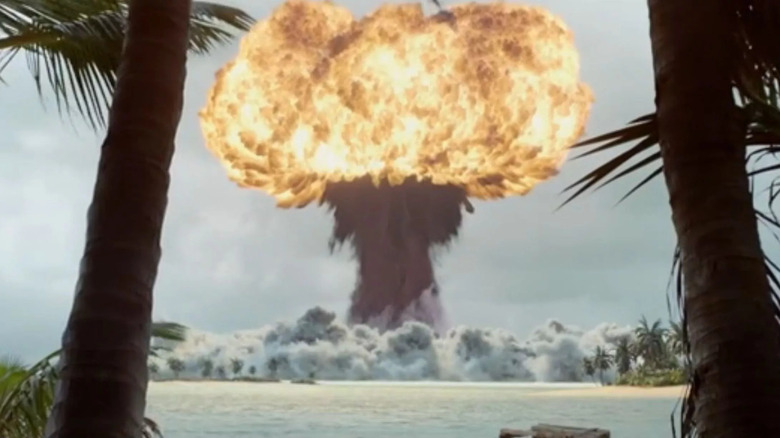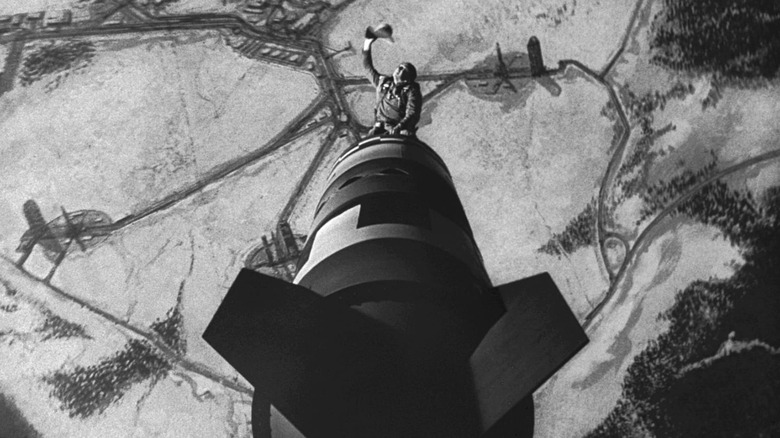Nuclear Vs Thermonuclear Weapons: Difference Explained
Christopher Nolan's highly anticipated film "Oppenheimer" is out, bringing with it a renewed interest in everything nuclear physics. The film dramatizes the life of J. Robert Oppenheimer and his work as head of the Manhattan Project which developed the first atomic bomb.
For better or worse, Oppenheimer marked a new era in the history of humanity, as this is the first time mankind has been able to eradicate itself within minutes with the push of a button. What's more, new research seems to indicate that the Manhattan Project and subsequent nuclear tests left an eternal mark on the face of the planet with the start of a geological epoch — the only actual sign that humanity left an impact on the planet.
With renewed interest in Oppenheimer's work on the bomb, so comes a renewed fear of the potential world-ending threat it poses to humanity, alongside other possibly worse weapons that could be unleashed at any moment. Even though the bomb and nuclear power are big in the cultural zeitgeist at the moment, almost 80 years after the first atomic bomb there continue to be misconceptions about it. This is particularly true of the term nuclear bomb and how it relates to the more modern thermonuclear device.
One key difference
Let's start with the nuclear bomb, the other star of "Oppenheimer." Also called the atom bomb, or fission bomb, these devices use nuclear fission to cause a tremendous explosion. More specifically, a nuclear bomb uses a small explosion on a sphere of plutonium-239 that splits the nucleus of the plutonium atoms. These split nuclei hit the nuclei of other atoms, causing a chain reaction as more nuclei split, which releases huge amounts of energy in the form of a massive explosion.
The only nuclear weapons that have ever been used in actual combat were fission (or nuclear) bombs. In the years since the bombing of Hiroshima and Nagasaki, however, scientists turned to a different and more devastating type of explosion — thermonuclear. These are much more powerful and devastating, even though the reaction at the center of it can lead to clean energy and other benefits.
A thermonuclear bomb, also known as a hydrogen bomb, is similar to a nuclear one in that it still uses fission at its core, but it uses that fission process to kickstart something bigger. The initial fission process that splits atoms is then used to ignite a fusion reaction with hydrogen particles. Because of the high temperatures of the fission explosion, the hydrogen atoms start to fuse, turning into helium which is a heavier element. The energy released by the fusion of the hydrogen nuclei releases a blast even more powerful than a fission explosion, which has terrified humanity for decades.

